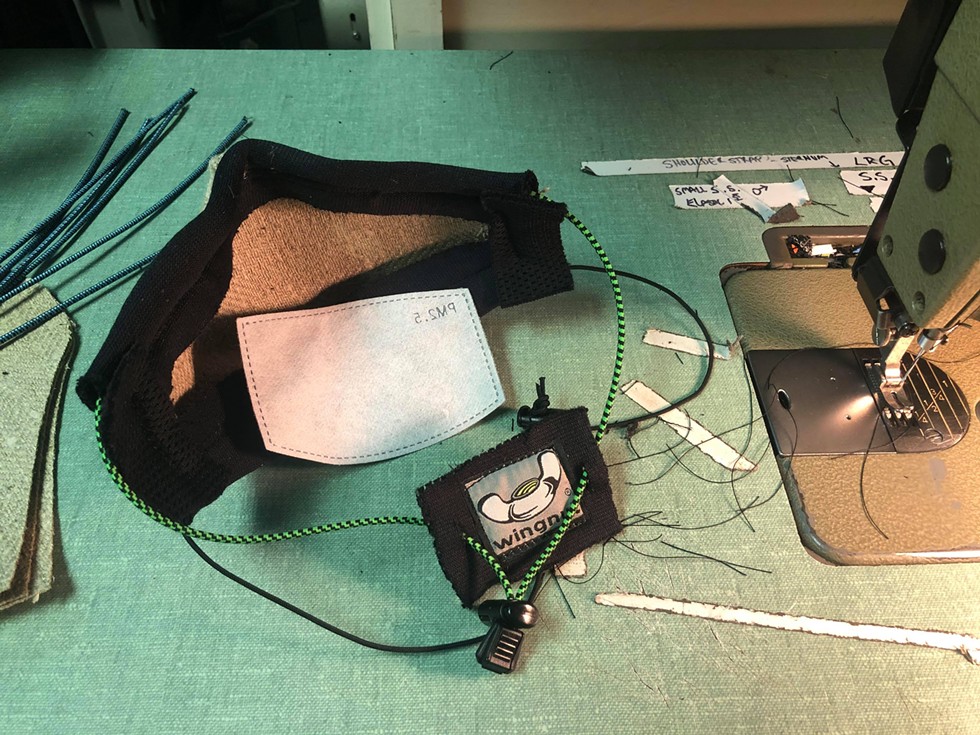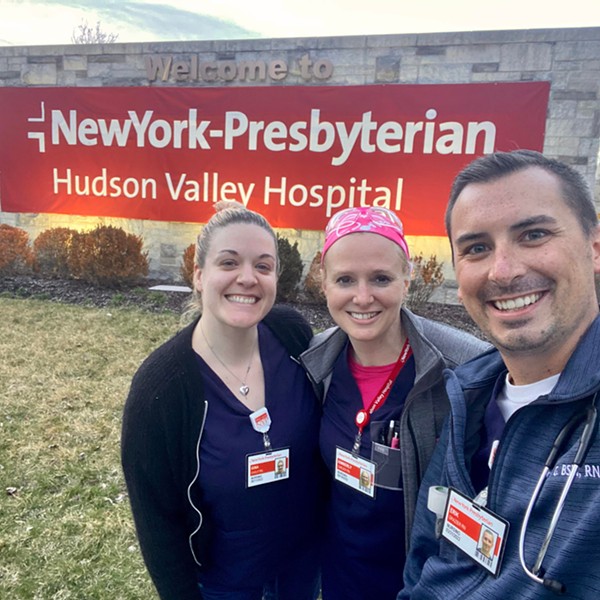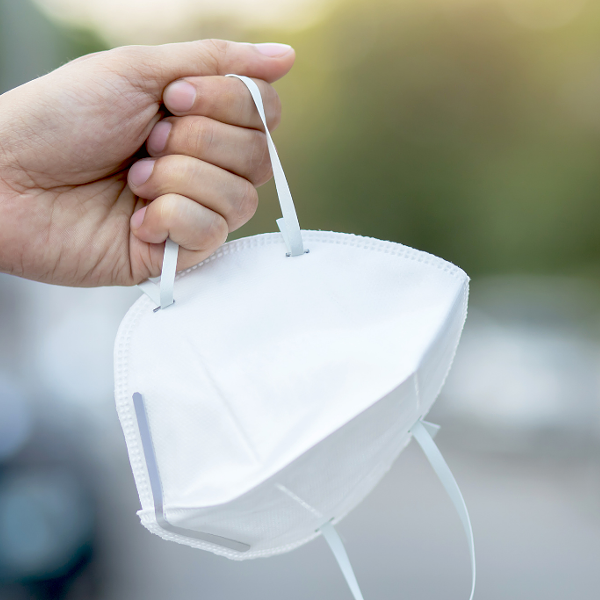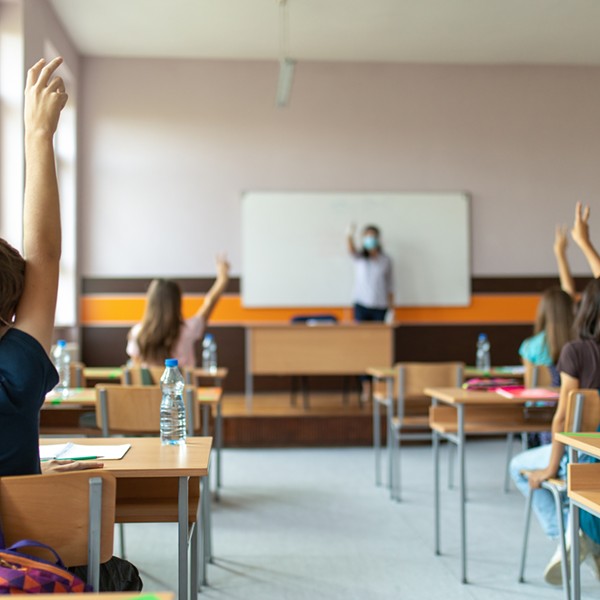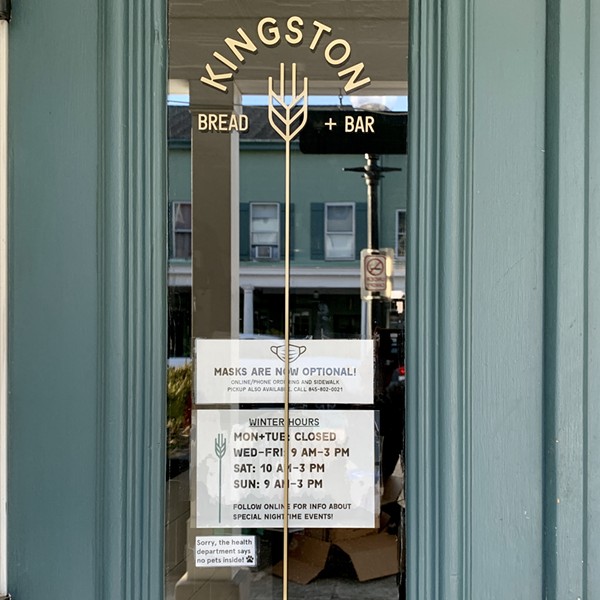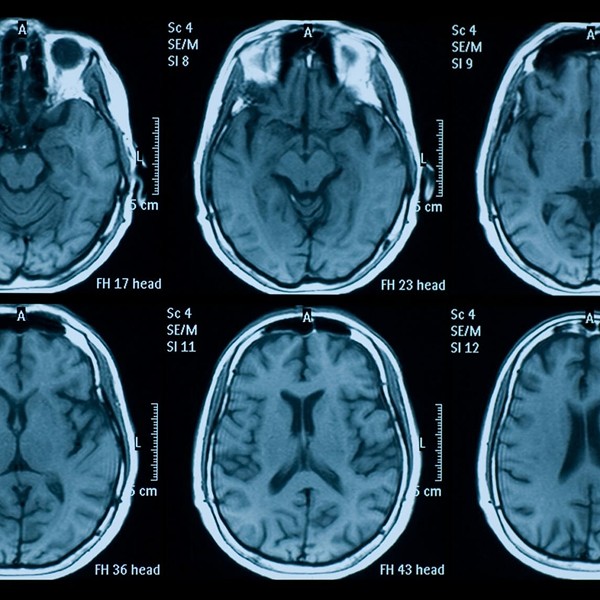While those of us stuck at home try to cope during the COVID-19 pandemic, Scott Gibson spends hours at Studio Wingnut—the workshop for his company New Sun Productions in Highland—chopping yards of fabric into neat rectangles on his cutting table. Each cutout is then shipped off to a vast network of home seamsters, who turn the strips into thousands of functional cloth masks for medical workers on the front lines.
“I realized that working with other people and learning how to work together is a project in and of itself,” Gibson says. A product designer by trade, the New Paltz resident has spent the last several weeks working with others in the Hudson Valley to create personal protective equipment, or PPE.
Medical professionals in rural, suburban, and urban communities alike are struggling to treat the continued rise in COVID-19 patients safely due to a shortage of essential gear such as surgical masks, face shields, gloves, and gowns. While municipalities, states, and the federal government work with private industry to shore up supplies, a joint effort by concerned citizens, small businesses, and college campuses is looking to meet the demand. This group of DIY-minded individuals, known simply as makers, are using means high-tech (3D printers, CG models) and low (old-fashioned sewing machines) to craft the gear needed by first responders during this crucial time.
The Maker movement initially began in the early aughts as a cultural movement in which mechanically inclined tinkerers joined up with the new class of hackers and coders that came of age online. They’re your neighbors, coworkers, and acquaintances who find the time to gather at group workshops (maker spaces). While these in-person meetups have always been planned online, social distancing has forced many regional collectives to strategize on Facebook groups and Slack channels.
Nathan Petrosky of Washingtonville started experimenting with 3D printing and modeling back in 2018 to improve his cosplay costume designs. He eventually branched out into lithographs and other objects thanks to the advice of his online community.
“There are tons of groups. If you have an issue, you take a picture or video and they let you know what they think is wrong and you check it,” Petrosky says.
Back in mid-March, Petrosky began using his two 3D printers to construct face shields for friends and family in the medical field. His smaller model is able to print one every 45 minutes, while his larger printer can do two at once in two hours, resulting in an average of four face shields every couple of hours.
Petrosky estimates that he’s printed and distributed well over 300 face shields and dozens of ear savers to Orange Regional Medical Center in Middletown, St. Anthony’s Community Hospital in Warwick, and a few other hospitals and ambulance services statewide since he began.
By comparison, Petroksy’s modest rig in his basement workshop is a cut above the handmade methods many are using to construct simple cloth masks at home. Dorothy Jones-Davis, the executive director of the national nonprofit Nation of Makers, has been impressed by the ingenuity shown by makers crafting at home and elsewhere. Once the pandemic started to ramp up, her organization began coordinating with the hashtag #GetUsPPE, which connects hospitals in need of PPE with volunteers willing to make it. Jones-Davis has seen everyone from grandmothers and young children to more “traditional” makers like Petrosky trade tips and advice on her Facebook and Twitter feeds.
“We had a furniture store—a guy who does upholstery—who said, ‘Can you give me a fabric mask design that I can mass produce? Because all my sewing machines are ready,’” she recalled. Social distancing isn’t slowing Nation of Makers down either. “We’ve seen some really engaging folks that are doing Zoom conference calls explaining how to make a mask, and then once you get the hang of it, they’ll come by and you can just put them in a box outside your door.”
Institutions with established histories of serving the public have also been pitching in. Enda Ryan, who oversees the maker space at the Poughkeepsie Public Library District, has been using the library’s seven 3D printers to help make face shields and ear savers. Since early April, he’s been working with the Hudson Valley Advanced Manufacturing Center at SUNY New Paltz to make and distribute over 11,000 face shields.
“Everybody’s doing their part. Whatever has been asked of them, they’ve all stepped up to the plate and taken the initiative,” Ryan says.
About an hour away, in the town of Catskill, local artists Laleh Khorramian and Kristen Dodge have assembled a team of two dozen volunteers who’ve made over 3,000 masks through their “MAsKs 4 peoplE” initiative. Since launching in February, the program has gotten nothing but praise from thankful first responders and community leaders such as Congressman Antonio Delgado, who applauded their efforts publicly.
Neither Khorramian or Dodge view what they’re doing as anything special though. “We're not heroes, we're just working and doing our best to fill a need, to offer support,” Dodge says.
Despite their varying methods, makers of all stripes adhere to strict cleanliness and quality standards. Both Ryan and Petrosky work with free NIH-reviewed files that they’ve slightly altered to accommodate their machines. Jones-Davis’s organization works with a panel of medical professionals to review the designs and tutorials shared by the more than 70,000-strong Open Source Medical Supplies Facebook group.
As large corporations like 3M and Honeywell are called upon to make PPE under the Defense Production Act, the demand for maker-made masks may wane, at least in current hotspots. And with new cases in states that were hit hard early, like New York and Washington, starting to decline, nonprofits, governments, and private companies will shift their sights toward supplying PPE to parts of the country gearing up for their own surges, Jones-Davis explains.
In the Hudson Valley, at least, demand remains steady. Teresa Maranzano and Sean Swehla, two Poughkeepsie residents who run a Slack channel and Facebook group for Hudson Valley makers, say that interest in PPE production has leveled off after an initial spike near the end of March. Everyone’s prepared to keep going even though they’re paying out of their own pockets, with some donations for supplies such as PETG plastic for printing and cotton cloth.
For instance, MAsKs 4 peoplE runs on $15,000 in citizen contributions raised in the last month. The common consensus is that even though they don’t think the country should have to crowdsource for supplies, they’re glad people are doing it anyway.
“The fact that I see this is as important to do doesn’t hurt, you know?” Ryan says of his work in Poughkeepsie. It’s good to be able to focus on something positive.”
Scott Gibson plans to gradually move the production of Wingnut’s line of biking packs stateside and shift resources toward making functional face masks for everyday use. He believes public mask use, which is already the norm in some Asian countries, will stick around in the United States long after the pandemic ends. For now, he’s preoccupied with perfecting a face mask design in collaboration with a filtration expert and numerous nurses and doctors. For all the stress he’s felt in the last month, lending a helping hand has brought some much-needed agency back into his life.
“It helps people at home do something other than be scared,” he says. “It also gives us a connection that we didn’t have before to other people.”







